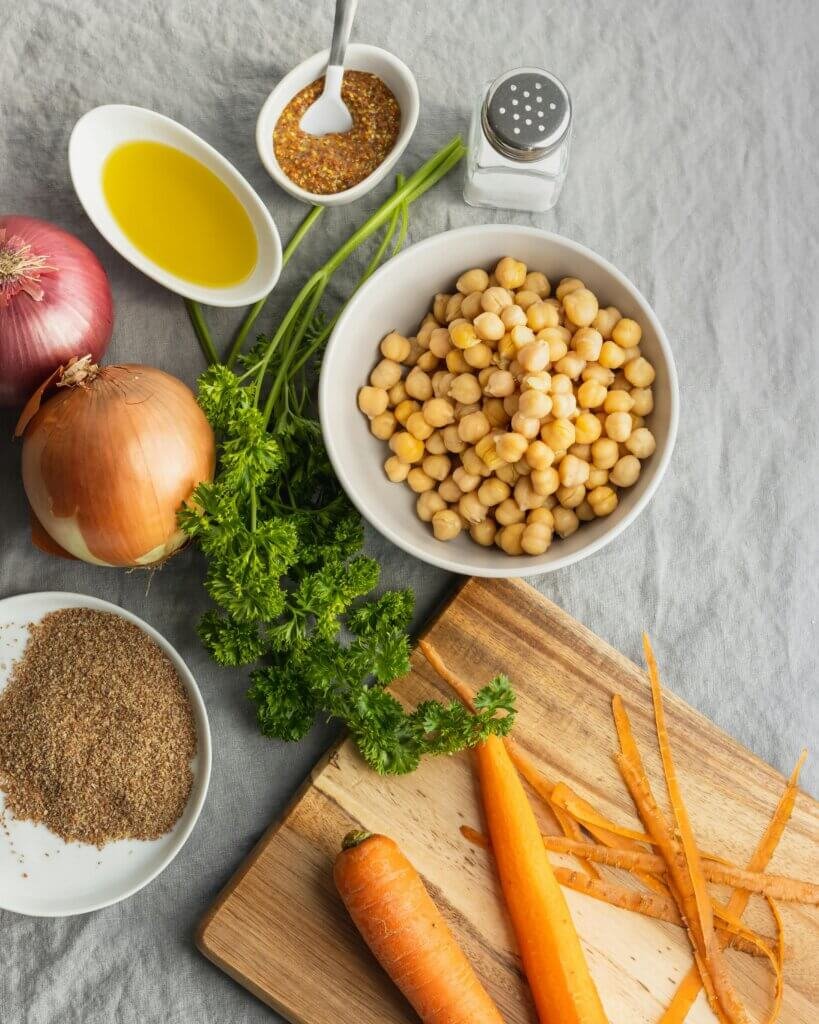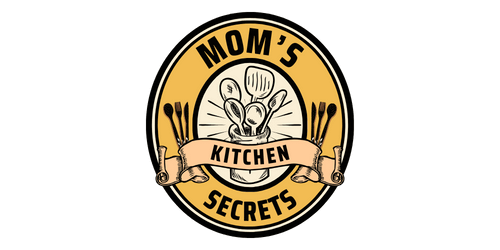Ready to take your cooking skills to the next level? Look no further! In this article, we’ve compiled a list of 10 essential cooking tips that will not only help you create delicious meals but also promote healthy eating. From choosing the right oils to incorporating more fruits and vegetables into your dishes, these tips are guaranteed to make your time in the kitchen a breeze. So grab your apron and get ready to cook up some nutritious and mouth-watering meals that will leave your taste buds begging for more!

Use olive oil instead of butter or vegetable oil
Benefits of olive oil
Olive oil is a healthy and flavorful alternative to butter or vegetable oil. It is rich in monounsaturated fats, which are known to promote heart health. These fats can help lower bad cholesterol levels and reduce the risk of heart disease. In addition, olive oil is also a good source of vitamin E and antioxidants, which can help protect your cells from damage caused by free radicals.
How to substitute olive oil
To substitute olive oil for butter or vegetable oil in your recipes, use a 1:1 ratio. This means that for every tablespoon of butter or vegetable oil called for in a recipe, you can use one tablespoon of olive oil instead. Keep in mind that olive oil has a distinct flavor, so it may alter the taste of your dish slightly. However, this can often be a positive change, as olive oil adds a delicious and earthy flavor to your dishes.
Best cooking methods for olive oil
When using olive oil for cooking, it is important to choose the right cooking method to ensure you get the most out of its health benefits. Olive oil has a low smoke point, meaning it can start to break down and lose its nutritional properties when heated to high temperatures. Therefore, it is best to use olive oil for low to medium heat cooking methods such as sautéing, baking, or drizzling over roasted vegetables. This will help preserve the integrity of the oil and retain its beneficial properties.
Limit salt and use herbs and spices for flavoring
Dangers of excessive salt intake
Consuming too much salt can have negative effects on your health, including an increased risk of high blood pressure, heart disease, and stroke. It is important to limit your salt intake to recommended levels to maintain a healthy lifestyle.
Benefits of using herbs and spices
Instead of relying on salt to flavor your meals, try incorporating a variety of herbs and spices into your cooking. Not only do herbs and spices add delicious flavors to your dishes, but they also offer numerous health benefits. Many herbs and spices have antioxidant properties and anti-inflammatory effects, which can help boost your immune system and reduce the risk of chronic diseases.
Popular herbs and spices for healthy cooking
There are plenty of herbs and spices to choose from when it comes to healthy cooking. Some popular options include basil, oregano, rosemary, thyme, turmeric, garlic, ginger, cinnamon, and cayenne pepper. These can be used to add flavor to a wide range of dishes, from soups and stews to stir-fries and marinades. Experiment with different combinations to find your favorite flavor profiles and spice up your meals without relying on excessive salt.
Choose lean proteins
Importance of lean proteins
Including lean proteins in your diet is essential for maintaining good health. Proteins are the building blocks of our body and play a crucial role in the development and repair of tissues. Lean proteins are low in saturated fats, which can contribute to heart disease and other health issues. They are also great sources of essential amino acids, vitamins, and minerals. Adding lean proteins to your meals can help you feel fuller for longer, regulate blood sugar levels, and support muscle growth and repair.
Examples of lean protein sources
When choosing lean proteins, opt for options that are low in fat but high in nutrients. Some excellent sources of lean proteins include skinless chicken breast, turkey breast, fish (such as salmon and trout), lean cuts of beef or pork (such as tenderloin or sirloin), tofu, legumes (such as chickpeas and lentils), and low-fat dairy products. These protein sources offer a wide range of flavors and textures, giving you plenty of options to create delicious and healthy meals.
Cooking methods that preserve the leanness
To preserve the leanness of your proteins, opt for cooking methods that don’t involve adding excessive fats or oils. Grilling, baking, broiling, and steaming are all excellent options that can help retain the natural flavors while minimizing the need for additional fats. When grilling or broiling, avoid charring or blackening the proteins, as this can produce harmful compounds. Instead, focus on cooking them until they are tender and cooked through. Experiment with different herbs, spices, and marinades to enhance the flavors without adding excess calories or fats.
Include a variety of colorful fruits and vegetables
The importance of colorful produce
Eating a variety of colorful fruits and vegetables is essential for achieving optimal health. Each different color of produce is associated with specific beneficial nutrients and antioxidants. For example, red produce like tomatoes and red peppers are rich in lycopene, which has been linked to a reduced risk of certain cancers. Greens like spinach and kale are packed with vitamins A, C, and K, as well as folate and fiber. Orange produce like carrots and sweet potatoes provide beta-carotene, an antioxidant that supports eye health and may reduce the risk of chronic diseases.
Benefits of including fruits and veggies
Including a variety of fruits and vegetables in your diet can provide a wide array of health benefits. They are low in calories and high in vitamins, minerals, and dietary fiber, making them a great choice for weight management and overall health. Fruits and vegetables are also packed with antioxidants, which help protect your cells from damage caused by free radicals. Additionally, they can help reduce the risk of chronic diseases such as heart disease, certain types of cancer, and obesity.
Ways to incorporate more variety
To incorporate more variety into your diet, aim to include fruits and vegetables from different color groups in your meals. For example, you could have a salad with mixed greens, cherry tomatoes, cucumber, and carrots. Add some berries or sliced oranges to your morning cereal or yogurt. Roast a tray of mixed vegetables, including bell peppers, broccoli, and sweet potatoes, as a tasty side dish. Incorporating a range of colors not only ensures you are getting a variety of nutrients, but it also makes your meals visually appealing and more enjoyable.

Opt for whole grains instead of refined grains
Differences between whole grains and refined grains
When it comes to grains, not all are created equal. Whole grains, such as whole wheat, brown rice, quinoa, and oats, are the healthier option compared to refined grains. Whole grains contain all parts of the grain, including the bran, germ, and endosperm, which provide valuable nutrients such as fiber, vitamins, and minerals. Refined grains, on the other hand, have been processed to remove the bran and germ, stripping away many of the beneficial nutrients.
The health benefits of whole grains
Incorporating whole grains into your diet offers numerous health benefits. The high fiber content of whole grains can help regulate digestion, promote satiety, and aid in weight management. Whole grains have also been linked to a reduced risk of heart disease, type 2 diabetes, and certain types of cancer. They provide a slow and steady release of energy, avoiding blood sugar spikes and crashes, which is essential for maintaining stable energy levels throughout the day.
Types of whole grains to try in your cooking
There is a wide variety of whole grains to choose from when it comes to cooking. Some popular options include whole wheat, brown rice, quinoa, oats, barley, buckwheat, and wild rice. These grains can be used in a variety of dishes, including salads, soups, stir-fries, and grain-based bowls. Experiment with different grains to discover new textures and flavors, and don’t be afraid to mix them together for added variety.
Reduce added sugars
The negative impact of added sugars
Consuming excessive amounts of added sugars can have detrimental effects on your health. It can contribute to weight gain, increase the risk of obesity, type 2 diabetes, and heart disease, and negatively impact dental health. Added sugars provide empty calories with little to no nutritional value, leaving you feeling unsatisfied and craving more sugary foods.
How to identify hidden sugars
To reduce your intake of added sugars, it is important to learn how to identify hidden sugars in food and beverage products. Sugar can be listed under various names on ingredient labels, including sucrose, high fructose corn syrup, cane sugar, brown sugar, and molasses. It is also important to note that many processed foods, such as breakfast cereals, granola bars, and flavored yogurts, often contain significant amounts of added sugars. Reading nutrition labels and ingredient lists can help you make informed choices and opt for products with lower sugar content.
Alternative natural sweeteners
To satisfy your sweet tooth without relying on added sugars, consider using alternative natural sweeteners. Some options include stevia, a plant-based sweetener that is calorie-free; honey, which provides additional nutritional benefits; and maple syrup, which offers a rich flavor and a variety of antioxidants. While these alternatives can still impact blood sugar levels, they are generally considered healthier options compared to refined sugars. However, it’s important to use them in moderation as part of a balanced diet.

Experiment with plant-based alternatives
Benefits of plant-based alternatives
Incorporating plant-based alternatives into your cooking can offer numerous health benefits. Plant-based proteins, such as tofu, tempeh, beans, lentils, and chickpeas, are generally lower in saturated fats and higher in fiber compared to animal proteins. This can help reduce the risk of heart disease, lower cholesterol levels, and promote better digestion. Plant-based alternatives are also often rich in vitamins, minerals, and antioxidants, providing a wide range of nutrients to support overall health.
Examples of popular plant-based alternatives
There are a variety of popular plant-based alternatives that can be used in place of animal products in cooking. For example, tofu can be used as a substitute for meat in stir-fries and curries, and can be marinated for added flavor. Lentils and beans can be used to make hearty soups, stews, and chili. Nutritional yeast can be used to add a cheesy flavor to dishes, making it a great alternative to dairy-based cheese. Plant-based milk alternatives, such as almond milk or oat milk, can be used in baking or cereal.
How to incorporate them into your cooking
Incorporating plant-based alternatives into your cooking can be as simple as swapping out animal proteins for plant-based proteins in your recipes. Explore new plant-based recipes and experiment with different flavors and textures. For example, you can replace ground beef with cooked and seasoned lentils in a taco recipe. Or, use mashed avocado instead of mayonnaise on a sandwich. By being open to new ingredients and recipes, you can discover delicious plant-based alternatives that you enjoy.
Practice portion control
Understanding proper portion sizes
Practicing portion control is an important aspect of maintaining a healthy diet. It involves eating the right amount of each food group to provide your body with the nutrients it needs without overindulging. Understanding proper portion sizes can help you maintain a balanced diet and prevent overeating.
Tools and strategies for portion control
There are several tools and strategies that can help you practice portion control. Using measuring cups, a food scale, or portion control plates can help you accurately measure your food. Another strategy is to fill half of your plate with non-starchy vegetables, one-quarter with lean proteins, and one-quarter with whole grains or starchy vegetables. This simple visual guideline can help you ensure a balanced and portion-controlled meal.
Balancing different food groups
Balancing different food groups is essential for a well-rounded and nourishing diet. Make sure each meal includes a mix of proteins, whole grains, fruits or vegetables, and healthy fats. This combination will provide a variety of essential nutrients and help you feel satisfied and energized throughout the day. Remember, portion control isn’t about deprivation, but rather making mindful choices and enjoying a balanced diet.

Cook at home more often
Advantages of cooking at home
Cooking at home offers numerous advantages when it comes to maintaining a healthy lifestyle. When you cook at home, you have full control over the ingredients that go into your meals. This gives you the opportunity to choose fresh, whole foods and limit the use of unhealthy additives, processed ingredients, and excessive fats, sugars, and sodium. By cooking at home, you can also portion your meals to fit your needs and preferences, making it easier to practice portion control.
Meal planning and prepping tips
To make cooking at home more convenient and efficient, consider meal planning and prepping. Meal planning involves deciding in advance what meals you will prepare for the week, creating a shopping list, and making sure you have all the necessary ingredients on hand. This saves time and reduces the need for last-minute takeout or unhealthy food choices. Prepping ingredients, such as washing and chopping vegetables or marinating proteins, in advance can also help streamline the cooking process and make healthy meals more accessible throughout the week.
Budget-friendly cooking ideas
Cooking at home can also be budget-friendly, as it allows you to skip expensive restaurant bills and packaged convenience foods. To save money, consider buying ingredients in bulk and utilizing them in various dishes throughout the week. Look for sales and discounts on fresh produce and consider incorporating cost-effective ingredients like beans, lentils, whole grains, and seasonal fruits and vegetables into your meals. With a little planning and creativity, you can enjoy delicious, healthy meals while sticking to your budget.
Read and understand food labels
Importance of reading food labels
Reading food labels is an essential skill for making informed choices about the foods you consume. Food labels provide important information about the nutritional content, ingredients, and potential allergens in a product. By understanding food labels, you can identify the presence of ingredients you want to limit or avoid, such as added sugars, sodium, trans fats, or artificial additives. This knowledge is crucial for maintaining a healthy diet and making choices that align with your dietary needs and goals.
Key things to look for on food labels
When reading food labels, there are several key things to look for. Start by checking the serving size, as this will determine the nutritional information per portion. Pay attention to the total calories, as well as the amounts of fat (specifically saturated and trans fats), cholesterol, sodium, carbohydrates, fiber, and protein. Limiting intake of unhealthy ingredients and prioritizing healthier options is key for maintaining a nutritious diet. Additionally, scan the ingredient list and be wary of products with a long list of artificial additives or hidden sugars.
How to make informed choices based on labels
Armed with the knowledge of how to read food labels, you can make informed choices when purchasing food products. Compare similar products and opt for options with better nutritional profiles. Look for products that are lower in saturated fats, trans fats, cholesterol, and sodium, while being higher in dietary fiber, vitamins, and minerals. Remember that the ingredient list is ordered by quantity, so prioritize products with whole foods at the beginning of the list and avoid those with added sugars or artificial additives at the top. By understanding food labels, you can make choices that align with your health and well-being.
Incorporating these healthy cooking tips into your daily routine can have a significant impact on your overall health and well-being. Taking small steps such as using olive oil instead of butter or vegetable oil, limiting salt and using herbs and spices, choosing lean proteins, including a variety of colorful fruits and vegetables, opting for whole grains, reducing added sugars, experimenting with plant-based alternatives, practicing portion control, cooking at home more often, and reading and understanding food labels can help you create delicious and nutritious meals that support your long-term health goals. So go ahead and start making positive changes in your cooking habits today. Your body and taste buds will thank you!



